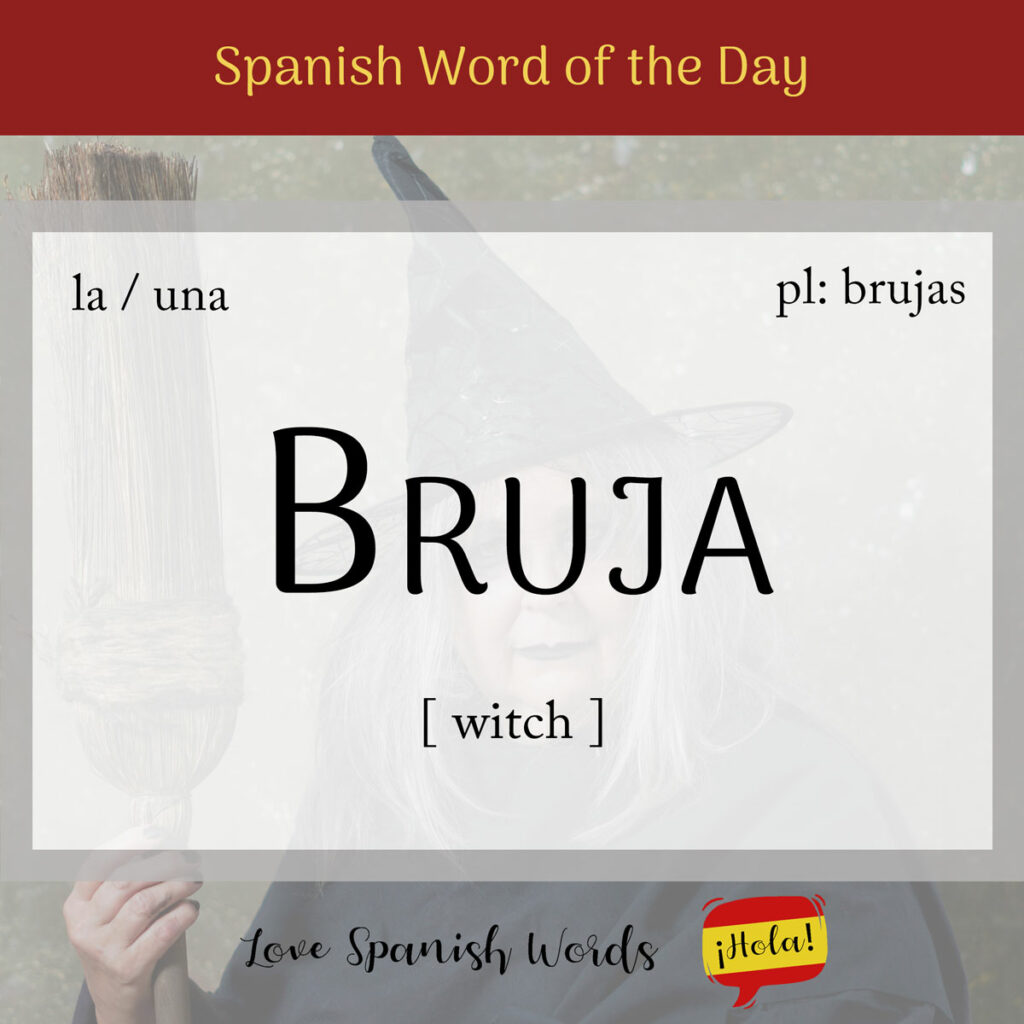With autumn approaching, we all begin to think about Halloween and its traditions, and it’s no surprise that brujas are among the most popular costumes and decorations.
For centuries, the word bruja has been used in Spanish-speaking cultures to describe women believed to have magical powers, whether for healing or causing harm. The term has evolved through folklore, literature, and cultural practices, and it now carries a variety of meanings, ranging from fear and superstition to empowerment and mystery.
Latin American Pronunciation
European Pronunciation

Its exact etymology is uncertain, but there are a few theories about its origins:
Celtic Influence: Some linguists suggest that bruja may have roots in pre-Roman languages of the Iberian Peninsula, potentially with Celtic influences, given the historical presence of Celtic tribes in Spain and Portugal.
Medieval Latin: Another theory proposes a connection to the Medieval Latin word volvĕre, meaning to roll or turn, which evolved into volvere (to cast spells) in Vulgar Latin and could have influenced the formation of bruja over time.
Basque Influence: There is also a hypothesis that the term could derive from the Basque word sorgin, which means witch. This theory is less widely accepted however.
The word bruja typically refers to a woman, making it a feminine noun, so it is paired with feminine articles.
- la bruja = the witch
- las brujas = the witches
- una bruja = a witch
- unas brujas = some witches
Brujo is the word for a male witch as well as the gender neutral form.
Dicen que una bruja vive en esa casa abandonada.
They say that a witch lives in that abandoned house.
Brujería (witchcraft) has been an important part of the social and cultural history in Latin America and is deeply rooted in a complex blend of indigenous beliefs, African traditions, and European and Catholic influences that date back to the colonial era. In many parts of the region, the concept brujería is seen not only as a form of magia oscura (dark magic) but also as a practice that can be used for healing, protection, and divination.
For instance, in Mexico, the practice of curanderismo (folk healing) often intersects with beliefs about witchcraft. Curanderos or curanderas use hierbas, rituales (rituals), and spiritual guidance to treat physical and spiritual ailments. Similarly, in the Andean regions, the practice of shamanism includes rituals performed by chamanes (shamans), who are believed to communicate with spirits and ancestors to bring about healing and protection.

In Colombia, Halloween is called Día de las brujas (Witches’ Day) The term adds a cultural twist to Halloween, focusing on the mysterious and fantastical aspects that are popular in Colombian celebrations.
Growing up in Colombia meant hearing all kinds of tales and stories about friends and family members getting embrujados (bewitched) and frightened in the countryside. Some witches could transform into animals, some are experts in casting mal de ojo (evil eye) — a widespread belief in many cultures that a person can cause harm or bad luck to another person by looking at them. People seek them out to find love, inflict pain on someone they hate, gain suerte (luck) or dinero (money), rid themselves of enemies, or enhance sexual potency. In my country, the armed conflict has impacted every aspect of life, including brujería. It is said that soldiers and guerrilla fighters use spells to avoid getting shot in battle, hide their locations, and haunt and terrorise the minds of their enemies.
Overall, brujería remains a significant and evolving aspect of Latin American culture. It continues to be a powerful presence in both rural and urban areas, influencing the spiritual lives and daily experiences of countless people.

The town in Belgium known as Bruges its called Brujas in Spanish which is a direct translation of the city’s name in Dutch. The similarity to the Spanish word for “witches” is purely coincidental and does not have any historical or cultural connection to the city’s actual heritage.
Me encantaría visitar Brujas algún día.
I’d love to visit Bruges one day.
Spanish idioms featuring ‘bruja’
Estar como una bruja
Literal translation: to be like a witch
English meaning: It describes someone who is acting strangely or unpredictably. It can also imply that someone is looking a bit disorganised or scruffy.
Las brujas no existen, pero de que las hay, las hay.
Literal translation: Witches don’t exist, but if they do exist, they exist.
English meaning: The idiom is often used to acknowledge the presence or influence of something despite lacking concrete evidence or rational explanation.

